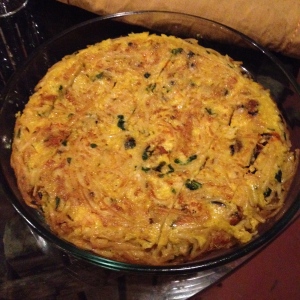As I have mentioned before for me the best part of the trip to Campania organized by Campania Stories is the visit to the wineries. It was late afternoon when I arrived at the Di Meo Winery for my visit.
Walking into the Di Meo winery was like entering an elegant home. I waited the arrival of Roberto Di Meo, co-owner of the winery with his brother Generoso, in a lovely living room with a fireplace.
Azienda Agricola DI Meo is located near the village of Salza Irpina, in the province of Avellino In Campania. The grapes are hand harvested from their own 30 hectares of vineyards and the winery is certified organic. Roberto is the enologist and Generoso runs the commercial and PR side
Roberto showed me around the winery and took me through a tasting of his wines. At one point when I asked about how he use wood for aging he answered, “The wood is on the wine, not the wine on the wood”
These are some of the wines I tasted
Fiano di Avellino 2015 DOCG 100% Fiano Vineyard is at 500 meters. Traditional wine making with controlled temperature. The wine is aged in bottle for 3 to 6 months before release. It has nice citrus fruit with hints a honey and smoke.
Greco di Tufo 2015 100% Greco. Vineyards are between 400 and 600 meters. This is an ample and flavorful wine with hints of peach and almond. 
I was in Puglia last week with Radici del Sud 2016 for a blind wine tasting competition of Southern Italian Wine. Both the Di Meo Fiano and Greco placed number one in their categories.
Falanghina Campania IGT 2015 100% Falanghina. Vineyards are at 350 to 400 meters. This is a wine with flavore and aromas of citrus fruit and good acidity. It would be great with spaghetti con vongole
Fiano di Avellino 2003 “ Erminia Di Meo Selection” 100% Fiano. Roberto said that the late harvest grapes were selected from a particular family parcel. There is a prolonged maceration with the skins at a low temperature followed by soft pressing and controlled temperature fermentation. A year after the harvest the wine remains in stainless steel with the “fecce fin” for 13 more years. The next release is the 2003. This is an exceptional Fiano worth the long wait and I complement Roberto for holding it back until it is almost ready to drink.
Taurasi Riserva DOCG 2007 “Selection Hamilton” 100% A Traditional red wine making. The wine spends 18 months in French barriques and Tonneau and 24 months in bottle before release. This is a well-balanced elegant wine with hints of berries, black pepper, tobacco and spice.
Don Generoso Irpinia IGT 2010 made from 75% Aglianico and 25% Piedirosso and other red grapes. This is a wine with a complex bouquet with hints of red and black berries and a touch of spice.
Roberto also make brandy
Brandy Don Vittorio aged for 25 years. I believe it is made from Fiano. Tom Maresca when he visited Roberto was luck enough to take home a bottle of this brandy and I had it with Tom after dinner on more than one occasion. Robert was surprised when I said I tasted it before. It is not imported into the US unfortunately. This is a very intense and refined brandy with hints of liquorices, honey and tobacco.
There are not many winemakers that make such excellent wines that can age and also produce brandy.





























